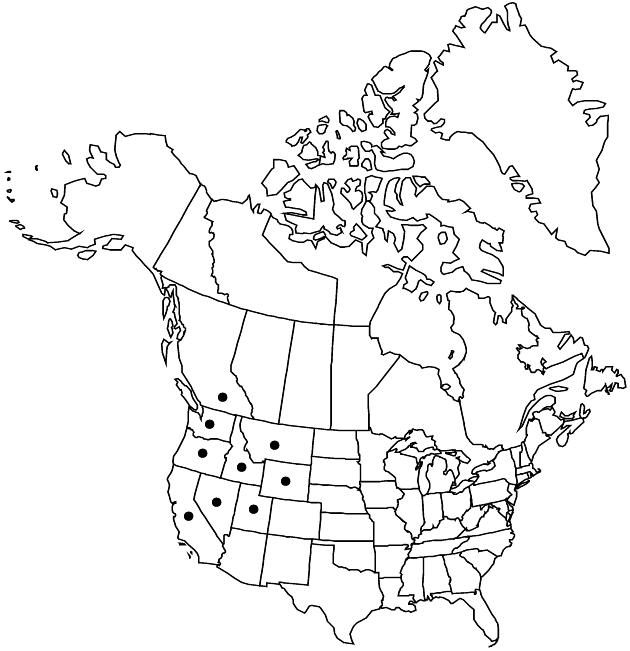Erigeron pumilus var. intermedius
Brittonia 6: 180. 1947.
Endemic
Synonyms: Erigeron pumilus subsp. intermedius Cronquist Erigeron pumilus var. gracilior Cronquist
Treatment appears in FNA Volume 20. Treatment on page 289.
36, inner of 12–16 (–20) bristles. 2n = 18, ray corollas usually pink, sometimes white. disc corollas: indurate portions relatively dull, glabrous or slightly puberulent. pappi: outer of coarse bristles or setiform scales.
Phenology: Flowering May–Aug.
Habitat: Moist or dry soil, meadows or sagebrush
Elevation: 1200–2300(–2800) m
Distribution
Loading map...

B.C., Calif., Idaho, Mont., Nev., Oreg., Utah, Wash., Wyo.
Discussion
Variety gracilior was described by A. Cronquist (1947) as “plants slender, the larger stems either not more than 1.5 mm thick near the base or bearing fewer than 5 heads.” Such plants occur mostly in the southern part of the variety’s range (mostly Idaho and Oregon, some in Washington); while the gracile tendency seems real, many arbitrary identifications must be made if two taxa are recognized.
Selected References
None.
Lower Taxa
None.
"thick" is not a number.
... more about "Erigeron pumilus var. intermedius"
introrse +
connate +
distinct +
herbaceous +
scarious +
hirsute +
papillate +
continuous +
decurrent +
1-nerved +
linear-lanceolate +
reduced +
ribbed +
stigmatic +
barbellate +
persistent +
12;16 +
coarse +
absent +
absent +
2-nerved +
dimorphic +
1.4mm;1.8mm +
absent +
staminate +
straight +
eglandular +
distinct +
proximal +
1;5 +
bisexual +
dispersed +
indeterminate +
1;5 +
surrounding +
turbinate;hemispheric +
reflexing +
alternate +
erect;spreading +
deltate +
2-carpellate +
inferior +
attached +
anatropous +
tough +
thick +
pistillate +
absent +
connate +
persistent +
distinct +
falling +
unequal +
equal +
dull +
indurate +
Brittonia +
1947 +
pistillate +
absent +
fertile +
epaleate +
pitted +
flat;conic +
fibrous +
setiform +
exalbuminous +
modifed +
2;4 +
stramineous +
persistent +
connate +
falling +
Endemic +
alternate +
erect +
deltate +
2-branched +
glabrous +
Erigeron pumilus var. intermedius +
Erigeron pumilus +
variety +
indurate +
shorter +
taprooted +
perennial +